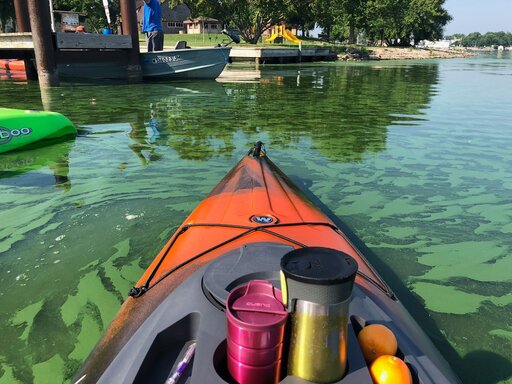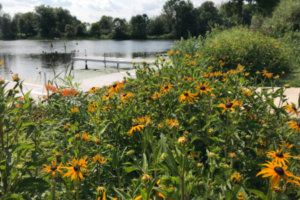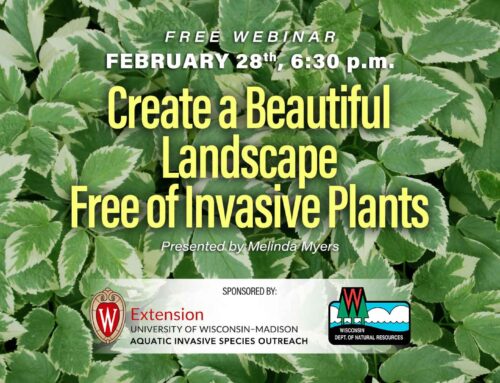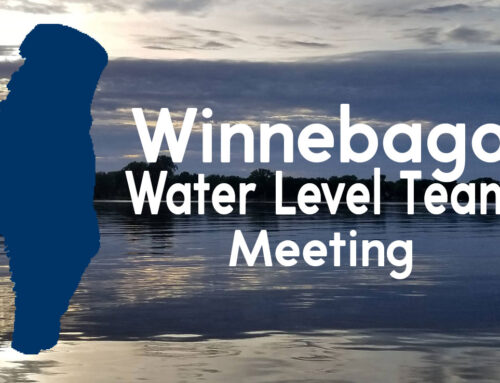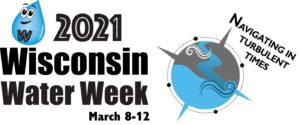
The theme for this year’s Wisconsin Water Week was Navigating In Turbulent Times
Many of the topics presented focused on climate change, water level fluctuations, restoration, and environmental justice throughout Wisconsin and the surrounding states.
This conference is geared toward a wide audience ranging from your average lake lover to research scientists. Most attendees represent smaller lake associations or districts.
Harmful algae blooms (HABs) were one of the recurring topics throughout Wisconsin Water Week. While not a new occurrence to the Winnebago System, we learned these types of algae blooms are starting to occur in Lake Superior, showing the impacts of pollution in once pristine waters over the last 20 years. 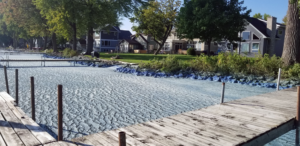
Harmful algae blooms are happening more often and later in the season in many lakes across the state. In 2020, property owners reported dense blooms well into November in Lake Winnebago and in some lakes, blooms have been observed under the ice in winter. Blooms are driven by nutrient pollution, higher temperatures, longer growing seasons, and intensifying rainfall events – all of which are measurable impacts we have been experiencing in Wisconsin as a result of climate change. And as we learned, are only predicted to get worse in the coming years. .
Agricultural fields are usually made out to be the culprit for driving algae blooms, however, that’s only part of the puzzle.In addition to agricultural runoff, urban development, the overall size of the watershed, and morphology of the lakes add to the problems for the Winnebago Lakes.
So what can we do as watershed residents to protect our waters?
There are a number of things we can do in our everyday lives to improve water quality and make our lakes and streams resilient against a changing climate.
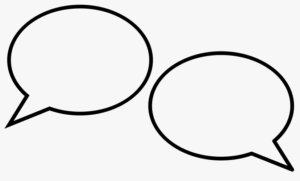
1.We can talk about climate change more.
Research by Katharine Hayhoe found that climate change is something people believe is occurring but do not believe it will affect them.
How do we start talking about this and recognizing that it is happening to everyone?
We hear things like: “The fishing is different than when I went fishing as kid” or “The weeds have never been this bad.”
External pressures including climate change are causing and exacerbating these issues.
Ok, we can talk about it more but what can we do to change it?
To protect our resources, local improvements need to occur.
2. Shoreline buffers, rain gardens, tree drops, and changes to lawn use are just some ideas that would help protect our lakes.
One idea that was presented at the conference was to protect our riparian areas by protecting our birds. We all want to protect our cherished resources so our children and grandchildren can experience what we have grown to love. To ensure we protect our birds, we need at least 70% of native vegetation in our yards. This includes trees, shrubs, herbaceous plants. These plants provide the food and space to support the insect populations that our birds relay on.
3. As we work to get every 7 plants out of 10 to be native consider these other actions to help our birds.
- Do Citizen science – track when you see your first robin, cardinal, mallard, loon
- Drink shade grown coffee – supports tree habitat in tropical regions, thus protecting our migrating bird populations
- Reduce plastic use
- Avoid pesticides – pesticides kill the food that our birds need
- Keep cats indoors – Cats are the 3rd highest cause of bird depths
- Make windows safer – Use items like Acopian bird savers https://www.birdsavers.com/ to make windows visible for birds – up to 1 million bird deaths are caused by windows each year.
If you take care of birds, you take care of most of the big problems in the world – Dr Thomas Lovejoy
Do you have a big dead tree or some dead branches on your tree? Are they in an area where they will not cause damage if they fall? Dead wood is extremely important for the insects and birds – if you can safely leave these trees or dead branches on these trees, leave them. You will see changes in your land’s biodiversity which increases the neat things you can see.
Adding native fruiting trees and shrubs to your landscape or shoreline is another great food source for our birds. Adding shrubs like high bush cranberry, dogwood, elderberry, or service berries can offer a variety of food sources, including that coveted winter food, and you will gain new visitors to your property.
As we continue to move forward, we need to continue to relate to water and how we improve it. Climate change and its effects will continue to create problems within our system and we should do as much as we can to protect it. Climate change is not abstract – it is happening to every single one of us.
Videos will be made available from Wisconsin Water Week on YouTube. Follow UW-Extension Lakes https://www.youtube.com/channel/UCFQeTE7bgdD3lKGKzUg2lGQ to watch presentations and learn more.
Shoreline restoration funding is available through Winnebago County as well as Healthy Lakes Grants through the WDNR. The Healthy Lakes program also offers grants to cover up to $1000/year for shoreline buffers and rain gardens. Grants are due November 1st.
Interested in making changes on your shoreland property? Contact us at the Winnebago Waterways Program at wwinfo@fwwa.org!

